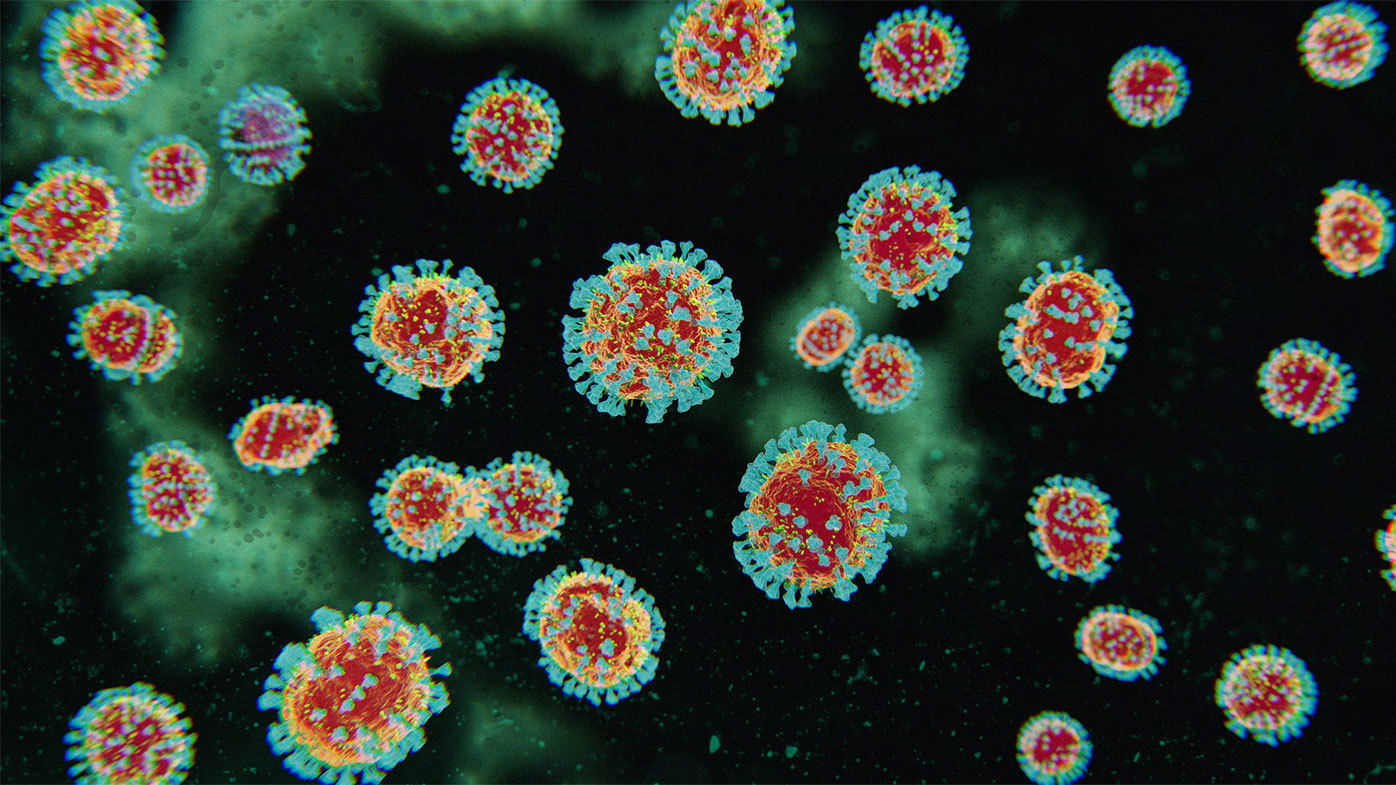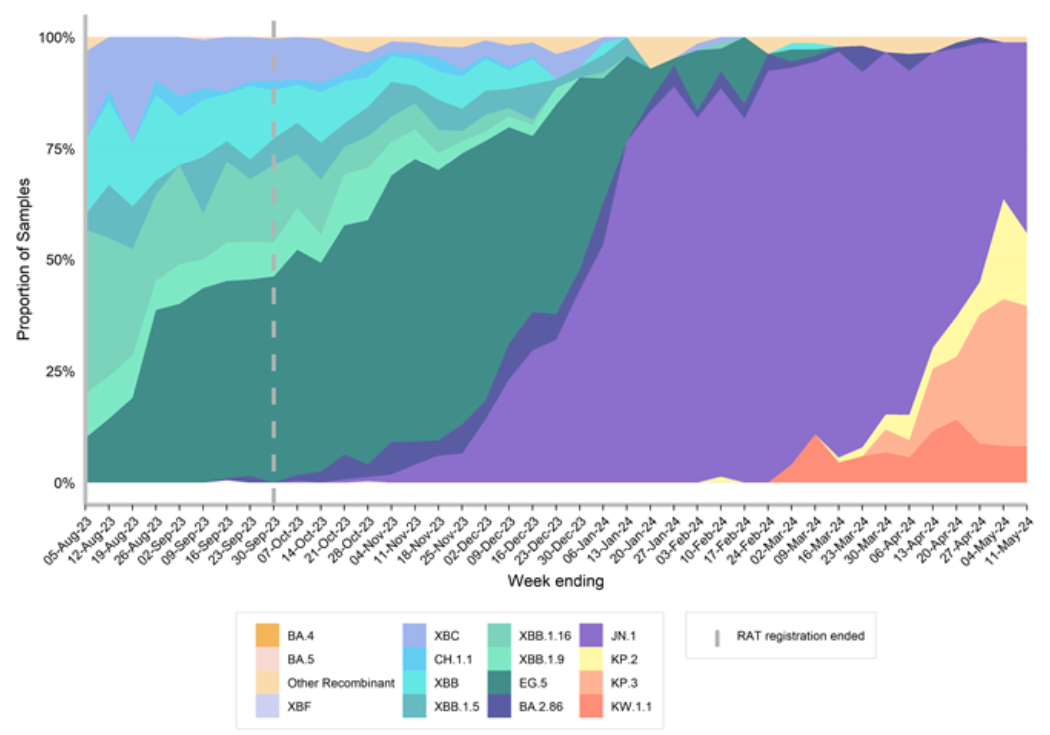A new family of COVID-19 strains, nicknamed “FLiRT”, are spreading across the world, and have arrived in Australia.
While it was only recorded for the first time five months ago, one of the subvariants has already become dominant in the United States, indicating they are highly transmissible.
This is what you need to know about the FLiRT strains of COVID-19.
What is the FLiRT variant?
FLiRT is the name given to an entire family of COVID-19 subvariants that are gaining dominance.
They’ve evolved from the JN.1 subvariant, which emerged late in 2023 and caused a spike in infections earlier this year.
The strains include KP.2, KP.3, JN.1.7 and a whole range of others which typically start with either “JN” or “KP”.
KP.2, in particular, is spreading strongly, becoming the dominant COVID-19 subvariant in the United States this month.
It was first recorded in January, according to the World Health Organisation, which designated it a variant under monitoring on May 3.
As for where the unusual name comes from, “FLiRT” refers to the specific mutations to the virus’s spike proteins that make the subvariants unique.
Are there COVID FLiRT cases in Australia
Yes.
Data differs from state to state (and territory) and isn’t as frequently updated as it was during the height of the pandemic, so we don’t have a totally comprehensive picture for the entire country.
However, it’s clear that FLiRT subvariants have arrived.
NSW Health data released today shows that KP.2, KP.3 and another JN.1 sublineage, KW.1.1, make up more than half of the COVID-19 cases in the state at the moment.
We also know total COVID-19 infections are increasing across Australia.
Health authorities around the country, including in NSW and Victoria, have warned of increasing cases in recent weeks, while the most recent national report (which covers the fortnight up to May 5) said infections had increased, bucking the trend of decreasing numbers since the start of the year.
Are COVID FLiRT symptoms different and is it more contagious than other variants?
Like other variants that have spread throughout the world, the FLiRT strains seem to be quite contagious.
But, according to experts from the United States, where they took off before gaining prominence in Australia, there’s no great difference in the symptoms or severity of illness caused by FLiRT.
“We learned from the laboratories that FLiRT variants appeared, so far, to be as transmissible as the other Omicron subvariants, which means they’re really quite contagious,” Dr William Schaffner, an infectious disease expert at Vanderbilt University, said last week.
“But they do not appear to be producing more severe disease or any sort of illness that’s distinctive from the point of view of clinical presentation symptoms.”
It’s worth keeping in mind that it’s still early days when it comes to these new subvariants, and scientists are still learning about the FLiRT family.
“We’ve had some variants in the past that start out kind of strong and then don’t take over,” Schaffner said.
“These subvariants could progressively become dominant, or they could get up to accounting for somewhere between 20 per cent and 40 per cent of the cases and then just stay there. We just have to see.
“The virus continues to be in charge. It’s going to tell us what it’s going to do. All of our crystal balls are rather cloudy.”
– With CNN







